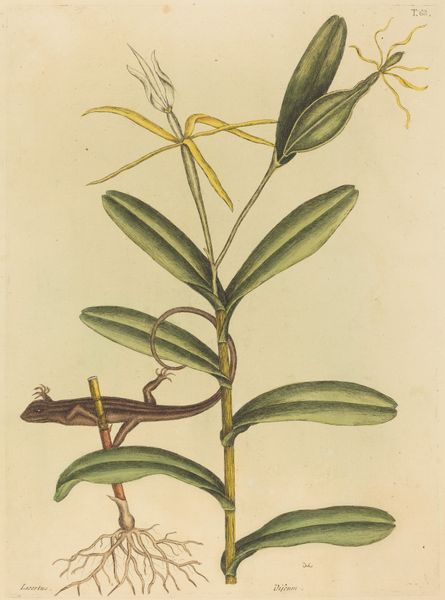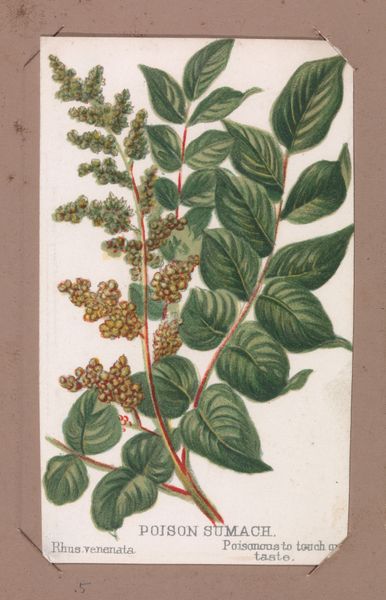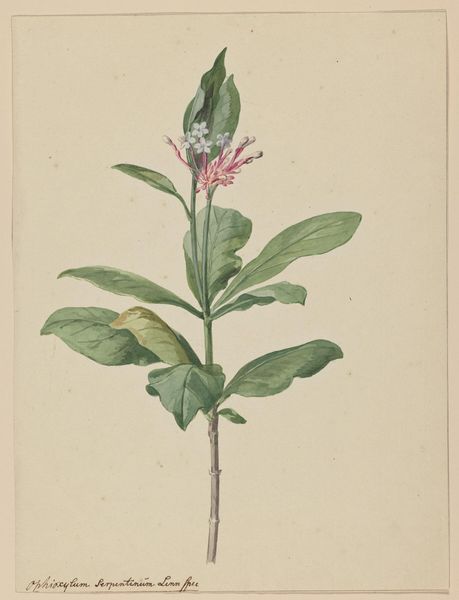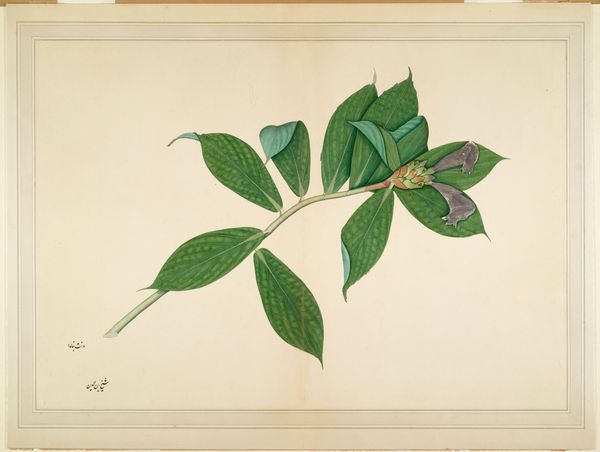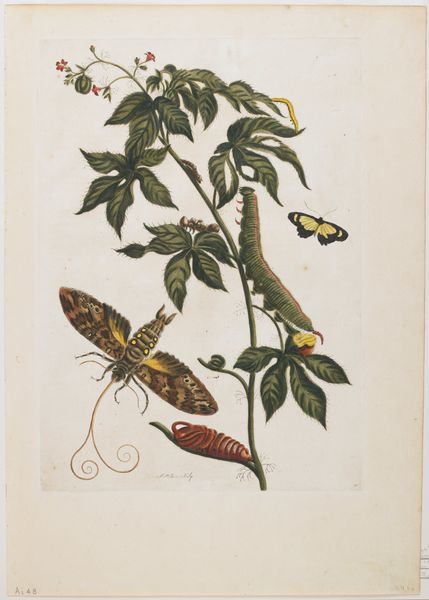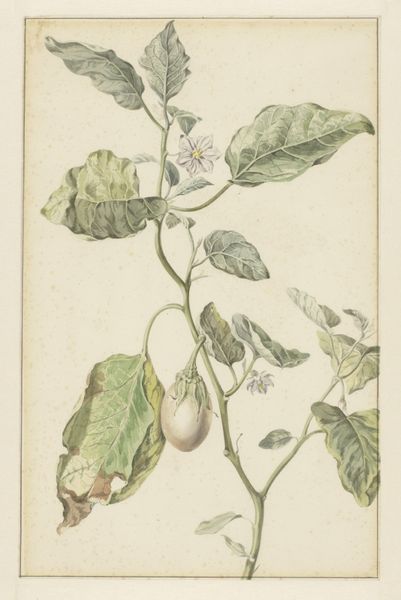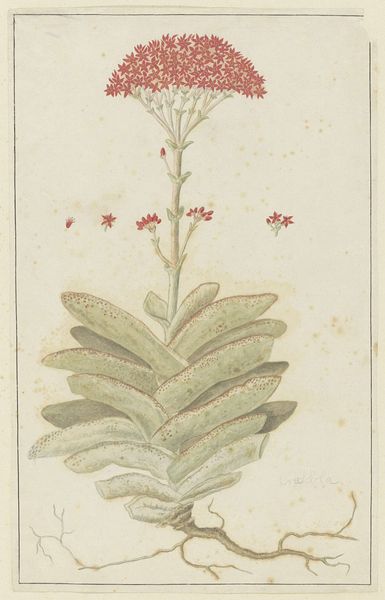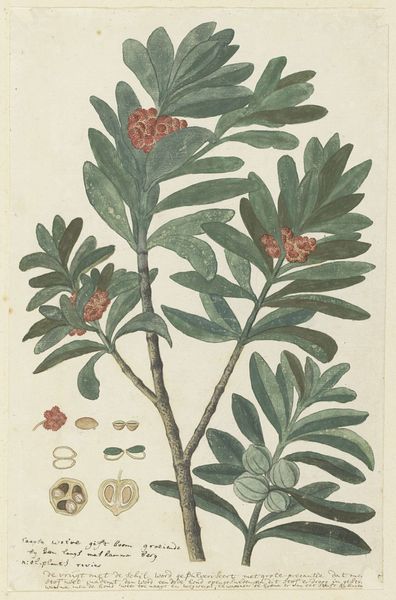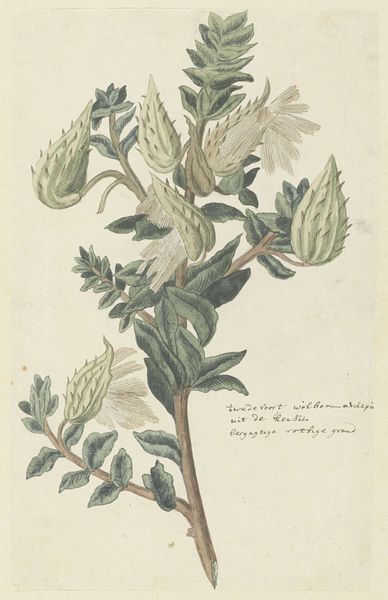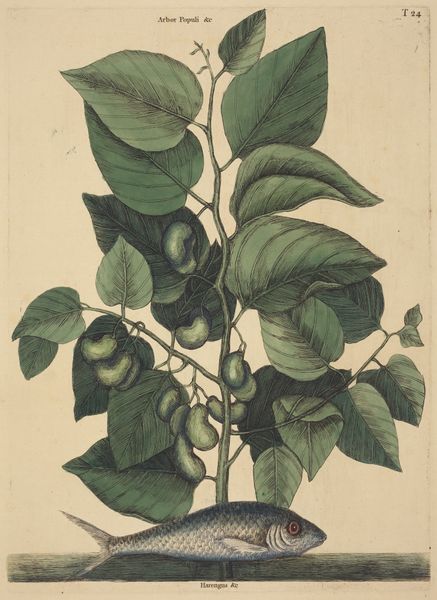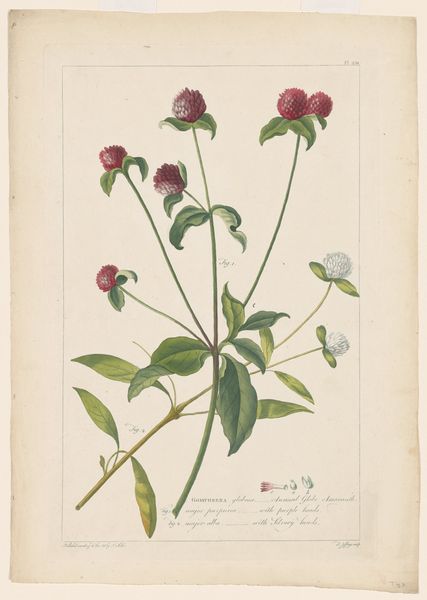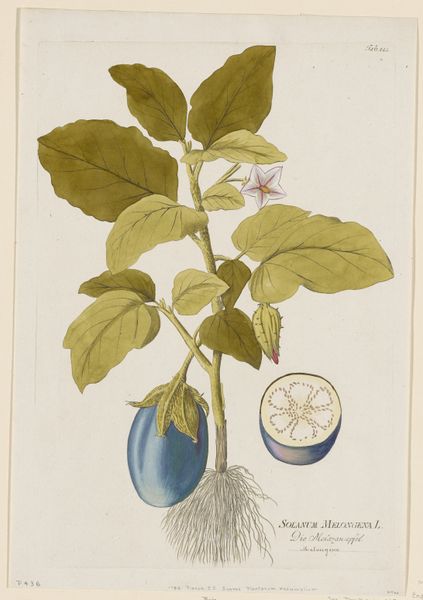
Willow leaves with poplar leaf beetle, eggs and larvae after 1679
0:00
0:00
drawing, gouache
#
drawing
#
baroque
#
gouache
#
botanical art
Copyright: Public Domain
Curator: Let's consider this fascinating drawing from after 1679, Maria Sibylla Merian’s “Willow leaves with poplar leaf beetle, eggs and larvae," held here at the Städel Museum. Merian uses gouache and drawing techniques to create a truly remarkable depiction. Editor: It's exquisite! A little unnerving too, perhaps—but exquisitely detailed. The precision gives a scientific edge. The damage to the leaves, for example: visually striking. Curator: Precisely! The work offers us such insight into Merian's meticulous observations. More than just scientific documentation, it highlights the complex life cycles and interwoven ecologies of plants and insects. Think of the societal norms she challenged to even *get* to this level of knowledge, to create this art! Editor: Right. We're looking at materials used with incredible skill. The layers of gouache to capture the subtle gradations in the leaves, for instance. What kind of pigments do you suppose she used, and where did she source them? It is a painstaking labor to capture these processes of consumption and decomposition on paper. Curator: That focus on materials gives rise to all kinds of thought! The composition asks questions around the social structures, perhaps about consumption, labor, gendered access to resources... Who has the power to consume and transform natural resources and how is that power visually represented, here? Editor: Absolutely, this brings up a central tenet of the materialist approach—examining the very act of creation, and how that act reflects a larger socio-economic framework. What labor went into its making? The collecting, mixing, applying the paint. A real dance with natural and processed resources to reflect it back to society. Curator: For me, seeing Merian as a woman forging a path in a patriarchal society, her work reflects agency in the face of exclusion and oppression. The art historical establishment frequently overlooks the importance of art production like this when in reality these natural observations had societal ramifications. Editor: The fact that Merian’s detailed illustrations served as essential scientific records is a perfect point. The practical application gives “high art” function. Her life’s work illustrates the fluid boundaries of our expectations around labor. Curator: What I value most is that it shows us the world anew, invites us to ask important questions, particularly relating to nature, power, and resilience. Editor: It indeed shows a cycle. One can marvel at the skill and consider labor, value, and the intersection of art, science, and society all at once.
Comments
stadelmuseum about 2 years ago
⋮
Composed with great artistic sensibility, while at the same time striving for the utmost fidelity to nature, this drawing depicts the stages of a poplar leaf beetle’s development. In the accompanying text in the Caterpillar Book, published in 1679, Merian described the mature beetles as “yellow”, but coloured them bright red, in keeping with their appearance in real life.
Join the conversation
Join millions of artists and users on Artera today and experience the ultimate creative platform.

